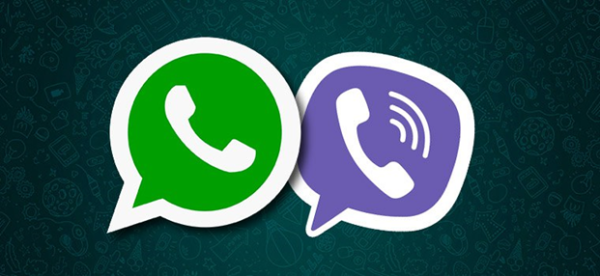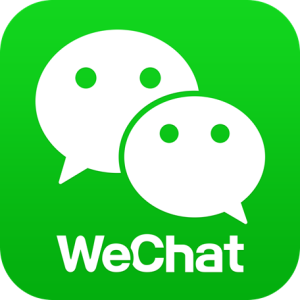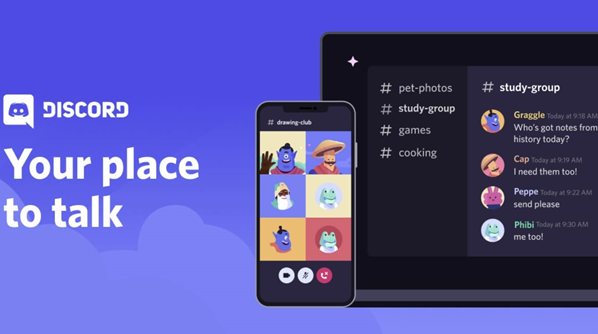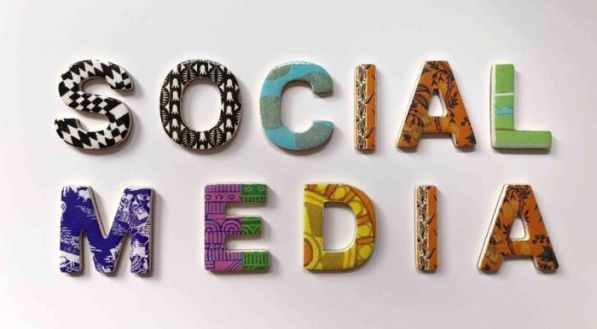Introduction
Social networks are the most important means of communication in the ever-changing world of digital content. The world now has many social media platforms, both established and new ones that shape the future, which content creators and marketers must traverse. This article examines 20 social networks that are critical for disseminating content.
By exploring these 20 key social networks, this article aims to provide a comprehensive overview of the most influential platforms in digital content creation. Whether you are a seasoned marketer, a budding content creator, or simply interested in the digital landscape, this will offer valuable insights into the tools and trends that are driving communication and content sharing today.
The Power Duo: Facebook and Instagram

With more than 2.8 billion active users per month, Facebook is the largest social network. It is a social networking website where users can post comments, share photographs, and post links to news or other interesting content on the web, chat live, and watch short-form video.
Instagram is a visual-focused platform with more than 1 billion monthly active users. It provides chances for cross-platform content distribution and is integrated with Facebook.
Twitter – Real-Time Content Sharing

Twitter has become the go-to medium for news updates, hot topics, and the quick distribution of information because of its global user base involved in real-time conversations. Twitter, which limits tweets to 280 characters, promotes concise but effective communication.
Twitter is still the most popular place to share content in real time, with 330 million active users each month. For breaking news, its character limit and focus on popular subjects make it invaluable.
LinkedIn – The Professional Network
At the heart of LinkedIn is the individual’s professional profile—an interactive resume that highlights one’s education, work experience, skills, and accomplishments.

LinkedIn is the industry leader in career-focused networking because it is the best social media site created just for professionals. Along with more than 774 million users worldwide, LinkedIn has revolutionized how people connect, look for opportunities, and cultivate business partnerships.
YouTube – The Video Powerhouse
Youtube is a free video sharing website that makes it easy to watch online videos. You can even create and upload your own videos to share with others.
Originally created in 2005, YouTube is now one of the most popular sites on the Web, with visitors watching around 6 billion hours of video every month.
Pinterest – Visual Content’s Paradise
Pinterest is a social site where you can collect and share images of anything you find interesting. You can also visually discover new interests by browsing the collections of other Pinterest users. Here’s how to get started using this uniquely creative social sharing tool.
Snapchat and TikTok – Ephemeral and Short-Form Content
The much older — in relative terms — app is an instant messaging device where users can send various kinds of media to each other. The catch is that these messages, in whatever form, only last for a short time before they ‘expire’ and are unreachable. The messages can be simply pictures, videos or text (or some combination), and can be uploaded to a story, much like Instagram stories, among other things.


Tiktok is a social media site that is all about that video content, with music as the secondary focus. The creative limits of these videos are pretty much nonexistent: Users can post anything they want — from dances to pranks to informational discussions. Like any social media site, there are guidelines on what can be posted — but these restrictions don’t keep content from being wildly creative and interesting. Algorithm’s curate a feed that channels new videos into a user’s view based on their interests.
Reddit – Community-Driven Content
Reddit is basically a large group of forums in which registered users can talk about almost anything you can imagine, from news, to pop culture, to technology, to comics, to film, to literature, to the weirdest things in the world, including some very NSFW (Not Safe For Work) stuff.
WhatsApp and Viber – Private Messaging’s Roleb

Viber and WhatsApp are both popular messaging apps that offer similar features but have some key differences. Both apps allow users to send text messages, make voice and video calls, and share multimedia files. However, WhatsApp has a larger user base and is more widely used globally, while Viber is particularly popular in certain regions like Eastern Europe. WhatsApp also offers end-to-end encryption for all messages, ensuring enhanced privacy and security, whereas Viber only provides this feature for secret chats. Additionally, Viber has a unique feature called Viber Out, which allows users to make low-cost international calls to non-Viber users. Ultimately, the choice between Viber and WhatsApp depends on personal preferences and the specific needs of the user.
Tumblr – Creative Diversity
With 500 million monthly active users, Tumblr attracts a niche audience with its creative and diverse content. Emphasizing microblogging, it’s a unique space for creators.
Tumblr is one of those social media platforms that everyone has heard of, but few know anything about. While many may not know exactly what it is, Tumblr is one of the most popular blogging platforms. You should check out the platform if you haven’t heard of it before. Regarding personal branding, Tumblr offers some unique advantages to bloggers and businesses alike.
IMO – Connecting Globally

Imo is a simple and faster video calling & instant messaging app. Send text or voice messages or video calls with your friends and family easily and quickly, even the signal under bad network.
IMO is essentially a chat software, but with 500 million users, it presents a special chance for international content distribution. Multimedia sharing and its global user base highlight varied audience participation.
Quora – Knowledge Sharing Community
Quora is a global online platform for asking questions and providing answers.
According to Google Trends, the search volume is significantly higher in India than it is in the United States. However, Quora does seem to rank well for many search queries. The fact that Quora answers questions may be one of the reasons why Google ranks Quora so highly for questions.
Telegram – Secure Messaging and Content Distribution
Telegram is a multi-platform messaging service founded by Russian-born entrepreneur Pavel Durov, although it was temporarily banned in Russia and has no affiliation with any government or company. It first rolled out on iOS and Android in late 2013, and now has an estimated 700 million users. Telegram’s user base tends to increase whenever a privacy scandal hits one of its larger competitors.
WeChat – The Super App

If there is one thing Facebook founder Mark Zuckerberg wishes he could create, and will never be able to acquire or replicate, it’s WeChat — China’s super-app, which has changed the way people use their phones, and disrupted the social media industry.
WeChat’s 1.2 billion monthly users integrate messaging, social media, and e-commerce.
Kuaishou – Short-Video and Live Streaming Platform
Kuaishou, a popular social media platform, originated in China and quickly gained global recognition for its focus on short-form video content. Launched in 2011, Kuaishou has grown into a diverse community where users share and discover videos, spanning from entertaining clips to daily life moments. With a user base exceeding 300 million daily active users, Kuaishou provides a platform for creativity, talent discovery, and social interaction.
QQ – A Social Platform with Multifaceted Features
Tencent QQ, also known as QQ, QQ China, is one of the earliest instant messenger apps developed by the tech giant Tencent. First releasing QQ China in 1999 under the name OICQ (“Open ICQ”), Tencent later changed the product’s name to QQ due to a threat of a trademark infringement lawsuit by AOL’s ICQ. QQ was the most popular social media platform in the 2000s, before WeChat’s launch.
After WeChat’s launch and becoming more mainstream in China, QQ is not so much mentioned. But it is still the second-largest social media platform in China, with over 940 million registered users and 700 million monthly active users, of which nearly 70% are Gen Zs. Thus, QQ is now considered the most important social media channel to reach Gen Z users in China.
Discord – Community Building and Content Distribution

With more than 500 million registered users, Discord is one of the most popular ways that gamers communicate online. Discord lets friends chat via voice, video, or text, and join servers where large communities gather.
Gaming is Discord’s focus. At one point, the service gave away free PC games to paid subscribers before realizing it couldn’t beat steam. However, non-gamers can take advantage of Discord’s useful features, too. More on its other uses in a bit.
Twitch – Livestreaming for Gamers and Beyond
Twitch is a popular online service used to watch and stream digital video broadcasts. It originally focused almost entirely on video games but has since expanded to include streams dedicated to artwork creation, music, talk shows, and just chatting.
Twitch was purchased by Amazon in 2014 and it remains one of the highest sources of internet traffic in North America. According to Statista, there were around 41.5 million Twitch users in the United States in 2020 and this figure is estimated to rise to 51.6 million by 2024.
Sina Weibo – Microblogging and Social Networking
To begin with, “Weibo” means “micro-blog” in Chinese. Launched by Sina Corporation in 2009, Sina Weibo, or simply Weibo is a microblogging website and app which compares to Twitter and Instagram. And with more than 300 million monthly active users, it is China’s biggest social media platform after Tencent’s WeChat.
 In comparison to WeChat, Sina Weibo is mostly used by a younger population. It offers more informational and trending content. Likewise, Weibo allows businesses to set up official and verified accounts to communicate with their followers and advertise their products and services.
In comparison to WeChat, Sina Weibo is mostly used by a younger population. It offers more informational and trending content. Likewise, Weibo allows businesses to set up official and verified accounts to communicate with their followers and advertise their products and services.
Douyin – The Chinese Version of TikTok
Douyin is the most popular short-video app in China, and it is one of the most visited social media platforms in the country. As on TikTok, the videos on Douyin appear in a vertical format and users swipe up to get to the next offering. There are other similarities to TikTok. The Douyin algorithm learns your interests from how you interact with the videos you are shown and feeds you an endless stream of content.
Navigating the Social Media Seas
In the digital age, the term “social media” has become synonymous with connectivity, information dissemination, and cultural transformation. From its inception as a platform for virtual conversations to its current role as a global powerhouse shaping societal narratives, social media has undergone a remarkable evolution. This article explores the multifaceted landscape of social media, examining its profound impact on connectivity, the challenges it poses, and its role in shaping the cultural fabric of our world.
At its core, social media serves as a bridge connecting individuals across geographical boundaries. Platforms like Facebook, Twitter, Instagram, and LinkedIn facilitate real-time communication, transforming the world into a virtual village where information flows seamlessly. The sharing of experiences, thoughts, and moments transcends borders, creating a sense of interconnectedness that was once unimaginable.
Multimedia content, ranging from captivating photos to live streaming, has enriched the social media experience. This evolution has far-reaching implications, influencing personal relationships, business interactions, and the global dissemination of information. Social media has become a dynamic force that knits the fabric of human connection, fostering shared experiences and shaping the way we perceive the world.
Related Posts





